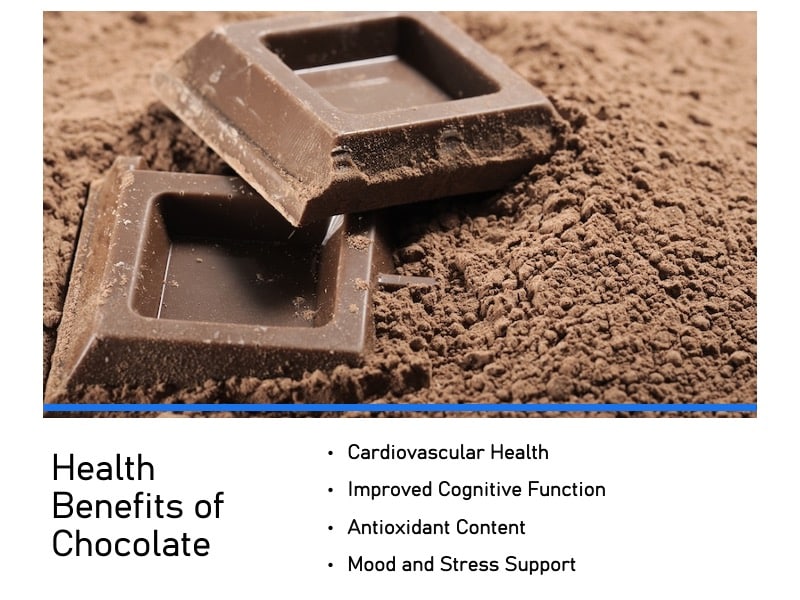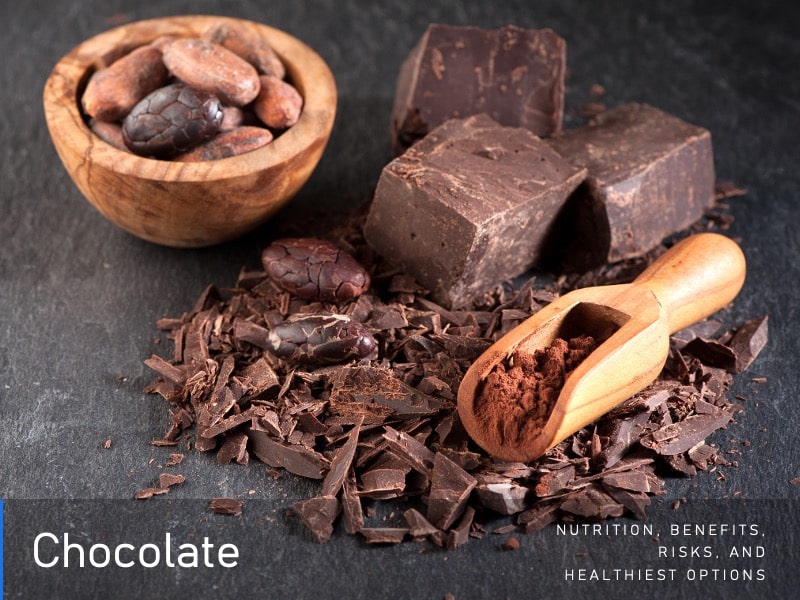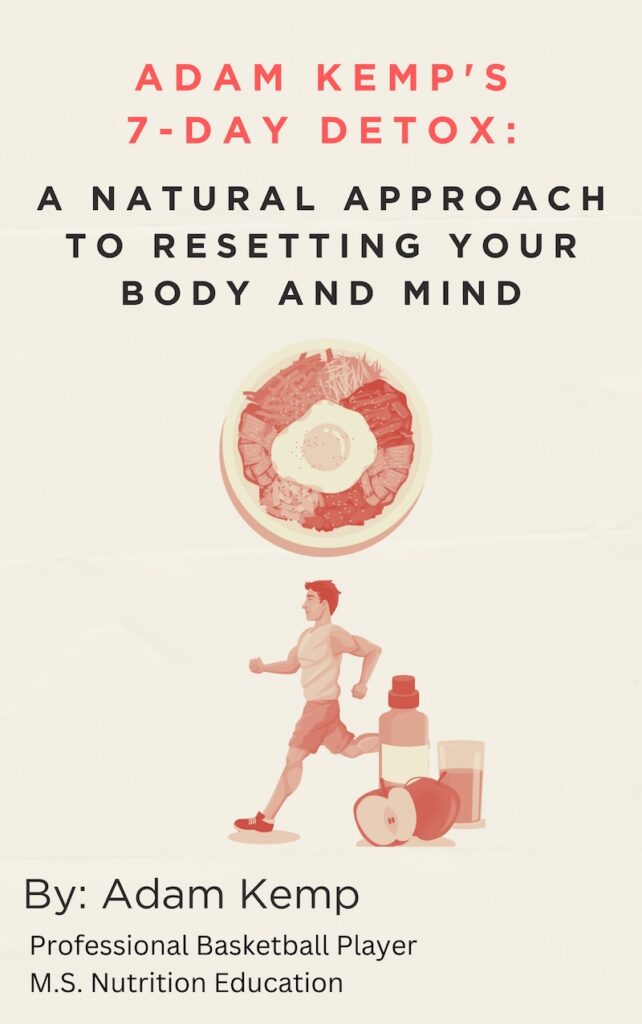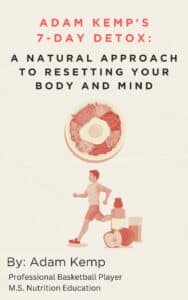Chocolate: Nutrition, Benefits, Risks, and Healthiest Options
Chocolate is one of the most beloved foods worldwide, known for its rich flavor, mood-enhancing effects, and cultural significance.
However, understanding the nutritional properties and health impacts of different types of chocolate is crucial, especially for individuals seeking to maintain a health-conscious lifestyle.
Whether you’re a wellness warrior or simply enjoy a chocolate bar from time to time, knowing how to distinguish between milk, dark, white, cocoa, and cacao can help you make more informed dietary choices.
What Is Chocolate?

Chocolate is a food product made from roasted and ground cacao seeds.
These seeds come from the Theobroma cacao tree and are fermented, dried, roasted, and processed to create cocoa solids and cocoa butter, which are the base ingredients of all chocolate.
Depending on the variety, chocolate may contain sugar, milk solids, emulsifiers such as lecithin, and other flavorings.
The percentage of cocoa solids directly affects the taste, bitterness, and health profile of each type of chocolate.
How is Chocolate Made?
Chocolate production is a complex process that transforms bitter cacao beans into the smooth, sweet product people around the world enjoy.
Each stage, from harvesting to tempering, affects the final flavor, texture, and nutritional quality of the chocolate.
Harvesting the Cacao Pods
Chocolate begins with the fruit of the Theobroma cacao tree.
Farmers harvest the cacao pods by hand and split them open to extract the beans, which are surrounded by a sweet white pulp.
Fermentation
The beans and pulp are placed in shallow containers or banana leaves and left to ferment for 5–7 days.
This natural process develops the precursors to chocolate’s complex flavor while reducing bitterness.
Drying
After fermentation, the beans are sun-dried for about a week.
This removes moisture, making the beans more stable for storage and transport.
Roasting
Once dried, the beans are roasted at high temperatures to enhance flavor and reduce acidity. Roasting also loosens the shells from the nibs inside.
Winnowing
Winnowing separates the outer shells from the cacao nibs—the edible part of the bean that contains cocoa solids and cocoa butter.
Grinding and Conching
The nibs are ground into a thick, paste-like substance called chocolate liquor (non-alcoholic).
This is further refined through a process called conching, which kneads and smooths the chocolate for several hours to develop its texture and flavor.
Tempering and Molding
Tempering involves heating and cooling the chocolate to stabilize its crystal structure. This gives finished chocolate its glossy appearance and satisfying snap.
The tempered chocolate is then poured into molds, cooled, and packaged.
Cocoa vs. Cacao vs. Chocolate
Understanding the difference between these three terms is crucial for decoding labels and choosing healthier options:
- Cacao refers to raw or minimally processed beans that retain more natural antioxidants, fiber, and magnesium.
- Cocoa is the roasted and often alkalized version of cacao. While still beneficial, it may contain fewer flavonoids depending on the level of processing.
- Chocolate is the end product that combines cocoa solids, cocoa butter, sugar, and often milk or flavorings.
Cacao is generally considered the most nutrient-dense form, but some minimally processed dark chocolates can still offer substantial health benefits.
Nutritional Properties of Chocolate
The nutrition profile of chocolate depends largely on the type and percentage of cocoa content. Here’s a general look at the nutritional elements in a standard 1-ounce (28g) serving of dark chocolate (70–85% cocoa):
- Calories: ~170–190
- Fat: ~12–15g (primarily stearic acid, oleic acid, and palmitic acid)
- Carbohydrates: ~13g (of which ~6–7g is sugar)
- Fiber: ~3g
- Protein: ~2–3g
- Magnesium: ~15% DV
- Iron: ~20% DV
- Flavanols: 500–900 mg, depending on brand and processing
Dark chocolate with higher cocoa percentages typically offers more fiber, iron, and antioxidants, while milk and white chocolate contain more sugar and fewer beneficial compounds.
Health Benefits of Chocolate

Chocolate, particularly dark chocolate rich in flavonoids, can provide meaningful health benefits when consumed in moderation.
Cardiovascular Health Support
Dark chocolate has been linked to improved blood flow, reduced blood pressure, and improved vascular function, largely due to its high flavonoid content (Hooper et al., 2012).
These compounds support nitric oxide production, promoting vasodilation and endothelial health.
Improved Cognitive Function
The polyphenols in cocoa may help improve memory and protect against cognitive decline, particularly in older adults.
Flavanols may enhance neuroplasticity and cerebral blood flow (Socci et al., 2017).
Antioxidant Content
Cocoa contains more antioxidants than most fruits per serving, including polyphenols, catechins, and procyanidins.
These protect cells from oxidative damage and inflammation.
Mood and Stress Support
Chocolate stimulates endorphin release and contains a small amount of phenylethylamine (PEA), a natural compound linked to mood enhancement.
It also boosts serotonin production due to its carbohydrate content.
For additional mood and stress support, try mushroom chocolate made with dark chocolate and adaptogenic mushrooms, which offers added benefits alongside indulgent flavor.
Blood Sugar and Insulin Sensitivity
In moderation, dark chocolate may improve insulin sensitivity and reduce the risk of type 2 diabetes because its flavanols help reduce inflammation and increase glucose uptake by cells.
When paired with a balanced diet, chocolate can support stable blood sugar levels without triggering spikes.
Pros and Cons of Eating Chocolate
Eating chocolate can be both a delightful treat and a smart dietary choice, depending on the type and quantity you consume.
While high-quality dark chocolate offers antioxidants, minerals, and cardiovascular benefits, overly processed varieties can be loaded with sugar, saturated fat, and additives that undermine your health goals.
Understanding the pros and cons of eating chocolate helps you enjoy it mindfully while making choices that support long-term wellness.
Pros
- Natural antioxidant source
- Can reduce blood pressure and improve heart health
- Offers key minerals like magnesium and iron
- Enhances mood and brain function
- Versatile in recipes, snacks, and beverages
Cons
- Many chocolate products are high in sugar, saturated fat, and calories
- Overconsumption can contribute to weight gain and insulin resistance
- Some contain artificial additives, emulsifiers, or dairy ingredients that are problematic for sensitive individuals
- White and milk chocolate offer limited health benefits compared to dark varieties
Milk Chocolate vs. Dark Chocolate vs. White Chocolate
Not all chocolate is created equal, and the differences between milk chocolate, dark chocolate, and white chocolate go far beyond taste.
Each variety has its own unique blend of ingredients, nutritional value, and health impact.
By comparing these three types side by side, you can better understand which options support your health goals and when each might fit into a balanced lifestyle.
Milk Chocolate
Milk chocolate contains milk solids and usually 10–50% cocoa solids. It is sweeter and creamier but lower in antioxidants and fiber. It is enjoyed for its taste and texture.
Dark Chocolate
Made with a higher percentage of cocoa solids (often 70%+), minimal added sugars, and no milk.
Rich in flavonols, fiber, and minerals. It is the best option for health benefits.
White Chocolate
Contains cocoa butter but no cocoa solids, so it lacks the antioxidant and flavonoid content.
Primarily composed of sugar, fat, and milk solids, it is more of a treat than a health food.
Healthiest Sources of Chocolate

Look for chocolate products with:
- At least 70% cacao content
- Minimal added sugar or sweetened with natural alternatives like monk fruit or stevia
- No emulsifiers or artificial additives
- Organic or fair-trade certified ingredients
- Raw cacao nibs or dark chocolate chips as snack alternatives
UNREAL chocolate snacks are my favorite healthy chocolate treat because they use simple, non-GMO ingredients with no artificial sweeteners, sugar alcohols, or preservatives.
They taste incredible but are sweetened with organic coconut sugar, making them a better-for-you option that still satisfies severe chocolate cravings.
Last update on 2025-07-11 / This article includes affiliate links/Images via Amazon Product Advertising API. I may earn commissions on purchases made through these links.
Other excellent healthy chocolate options include:
- Eating Evolved coconut butter cups
- Alter Eco dark chocolate (organic and ethical sourcing)
- Navitas Organics cacao nibs (great in smoothies or oatmeal)
Enjoy content like this? Subscribe to my YouTube channel for more health and fitness tips, evidence-based nutrition advice, exercise tutorials, and practical wellness strategies. Whether you’re looking to move better, feel stronger, or make smarter food choices, I create content based on research and experience that can help you reach your goals.
Is Chocolate a Superfood?
Chocolate (specifically dark chocolate and raw cacao) can be considered a superfood, but with important qualifications.
Dark chocolate (especially with at least 70% cacao) is rich in antioxidants, particularly flavonoids like epicatechin and catechin, which have been linked to improved heart health, reduced inflammation, and enhanced brain function (Katz et al., 2011).
It also provides minerals such as magnesium, iron, and copper, all of which play key roles in metabolic and cardiovascular health.
However, not all chocolate qualifies as a superfood.
- Milk chocolate and white chocolate are typically too high in sugar and low in cocoa solids to offer meaningful health benefits.
- Processed chocolate snacks also often include emulsifiers, dairy, and unhealthy fats that negate any antioxidant advantages.
So, if you’re eating high-quality dark chocolate or raw cacao in moderation, it can be considered a superfood based on its nutrient density and health-supporting compounds.
Just be mindful of added sugars and ingredients that may compromise its benefits.
Is Chocolate a Healthy Snack?
Chocolate can be a healthy snack when consumed in moderation and carefully chosen.
A few squares of high-quality dark chocolate (around 10–20g) can satisfy cravings, provide polyphenols, and support health without excess sugar.
However, typical “chocolate snacks” like candy bars, cookies, or sugar-laden hot chocolates can sabotage health goals.
These products often contain refined oils, high-fructose corn syrup, and other unhealthy fillers.
How Often Should You Eat Chocolate?
How often you should eat chocolate depends on the type, portion size, and your overall health goals.
For most people, enjoying a small amount of high-quality dark chocolate (about 1 ounce or 20–30g) a few times per week can be part of a healthy, balanced diet.
This amount provides antioxidants and essential minerals without excessive sugar or calories.
If you’re choosing dark chocolate with at least 70% cacao and minimal additives, regular moderate consumption may support heart health, mood, and cognitive function.
However, eating chocolate daily, especially processed varieties high in sugar or dairy, can contribute to weight gain, blood sugar spikes, and nutrient imbalances if not carefully managed.
General Guidelines:
- Dark Chocolate (70%+ cacao): 2–4 times per week in small portions is typically fine for most people.
- Milk or White Chocolate: Limit to occasional treats due to lower flavonoid content and higher sugar.
- Cacao Nibs or Raw Cacao: Can be consumed daily in smoothies or meals, as long as portions are controlled.
Ultimately, the key is moderation, label reading, and focusing on quality over quantity. Chocolate should be a conscious indulgence, not a mindless habit.
Final Thoughts: Is Chocolate Good for You?
Chocolate can absolutely fit into a balanced diet, especially when chosen with intention and enjoyed in moderation.
For the greatest health benefits, focus on dark chocolate or cacao-based products that are minimally processed and low in added sugars.
Limit or avoid heavily processed options high in dairy, emulsifiers, and refined sweeteners.
Ultimately, the key is mindful consumption: read labels, know your ingredients, and treat chocolate as a flavorful addition to a healthy lifestyle, not a daily indulgence without limits.
Frequently Asked Questions About Chocolate
This website does not provide medical advice. This website site does contain affiliate links, and purchases may earn a commission.
Read my Medical Disclaimer, Review Disclaimer, and Publishing Policies for more details. Use of this site indicates acceptance of these terms.




